Abstract
Many authors have reported that the development of programs for producing durable extra-therapy responding lags behind the development of programs for producing initial behavior change. In Experiment I, responding was recorded continuously in both the therapy and extra-therapy settings. The results showed that one child did not generalize to the extra-therapy setting, but that other children did. However, for the children who generalized, extra-therapy responding was not maintained. Therfore, in Experiment II two variables affecting the durability of extra-therapy responding were assessed and found to be influential: (a) the use of partial reinforcement schedules in the original treatment environment; and (b) the presence of noncontingent reinforcers in the extra-therapy environment. The results suggest that there are two distinct parameters of extra-therapy responding: generalization and maintenance. A technology for producing durable extra-therapy responding is discussed in terms of different treatment procedures required for different deficits in extra-therapy responding.
Full text
PDF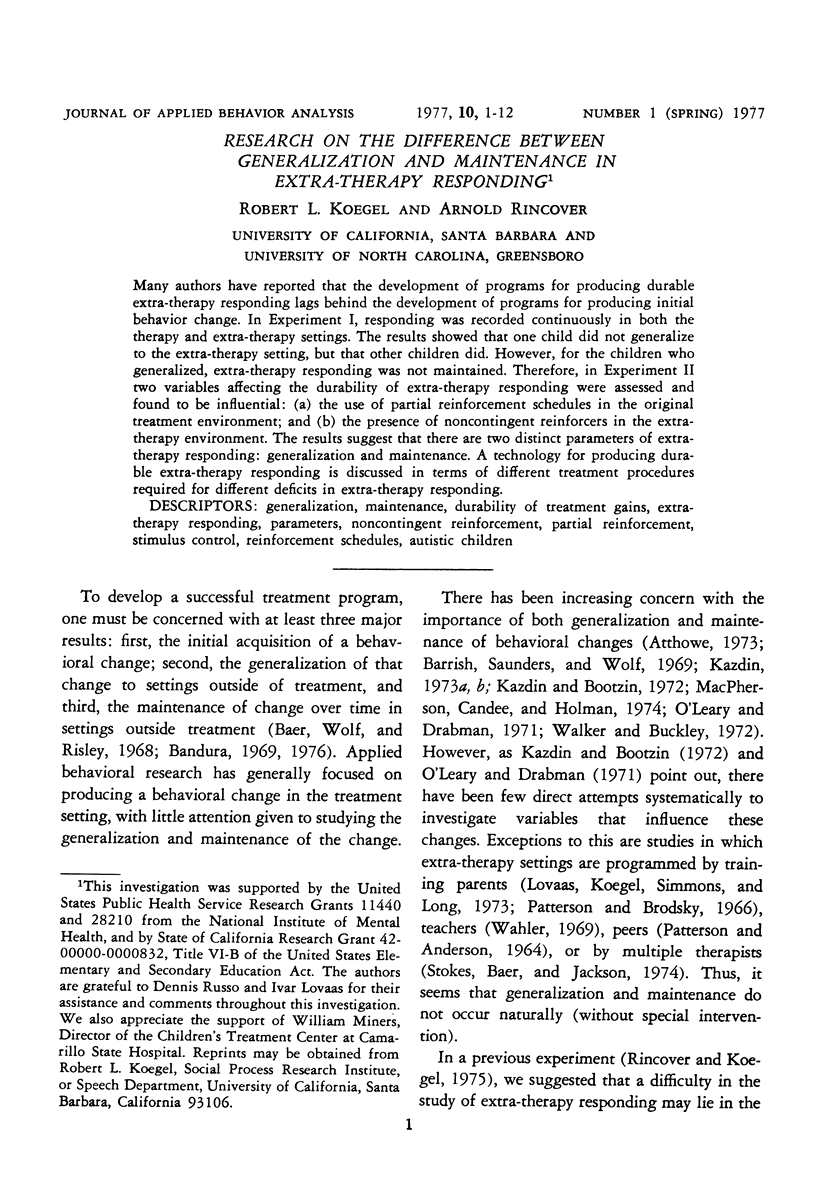
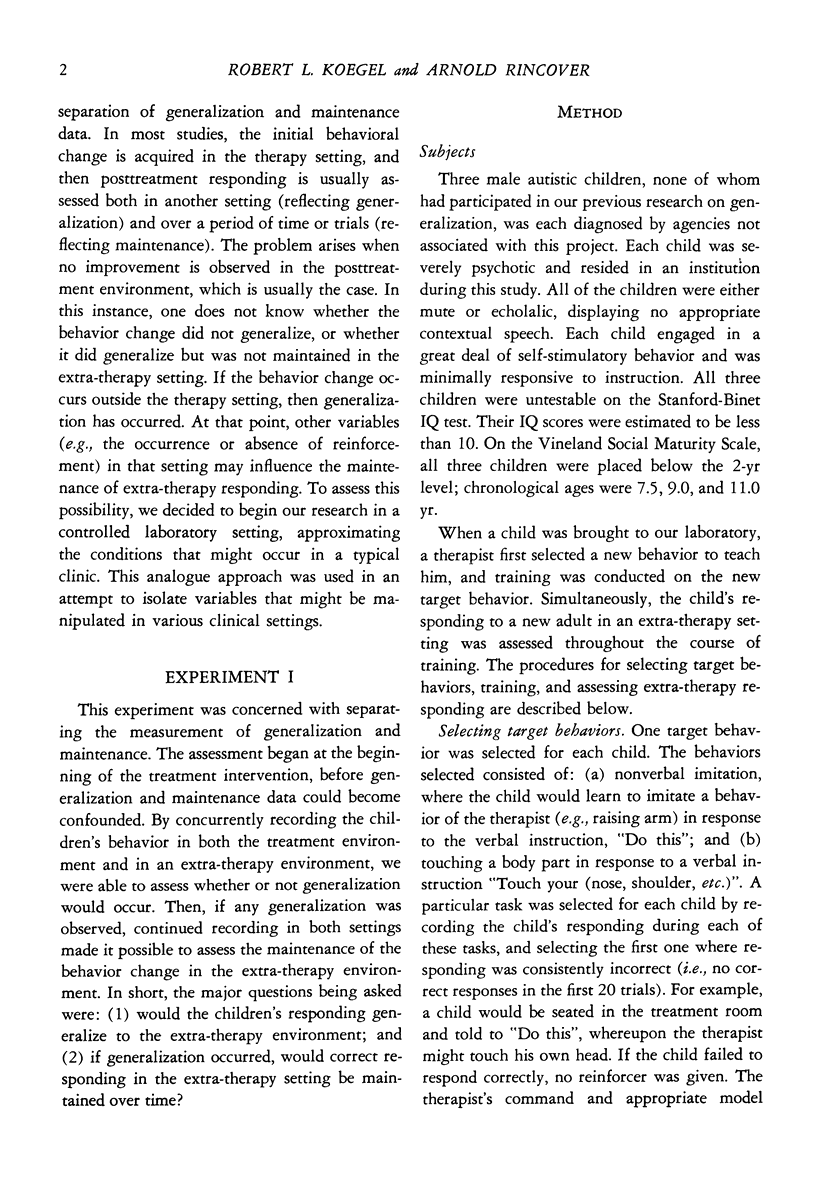
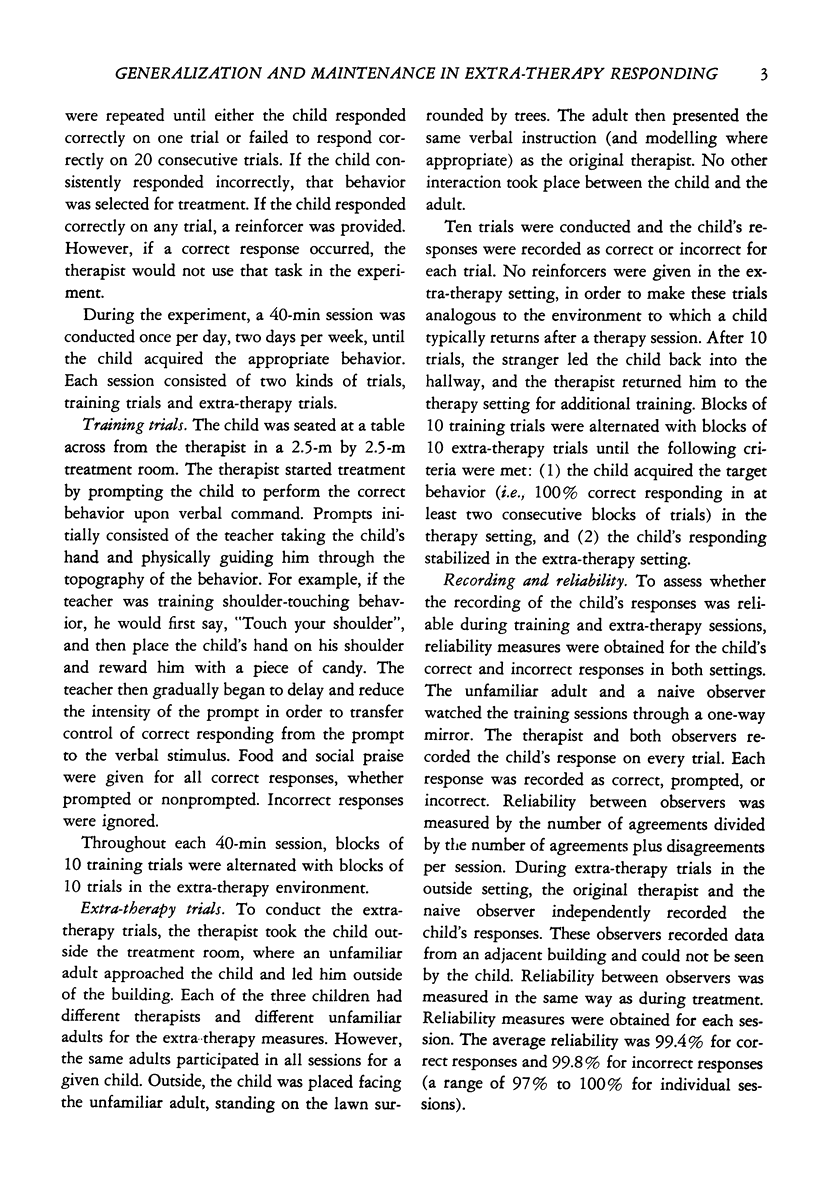
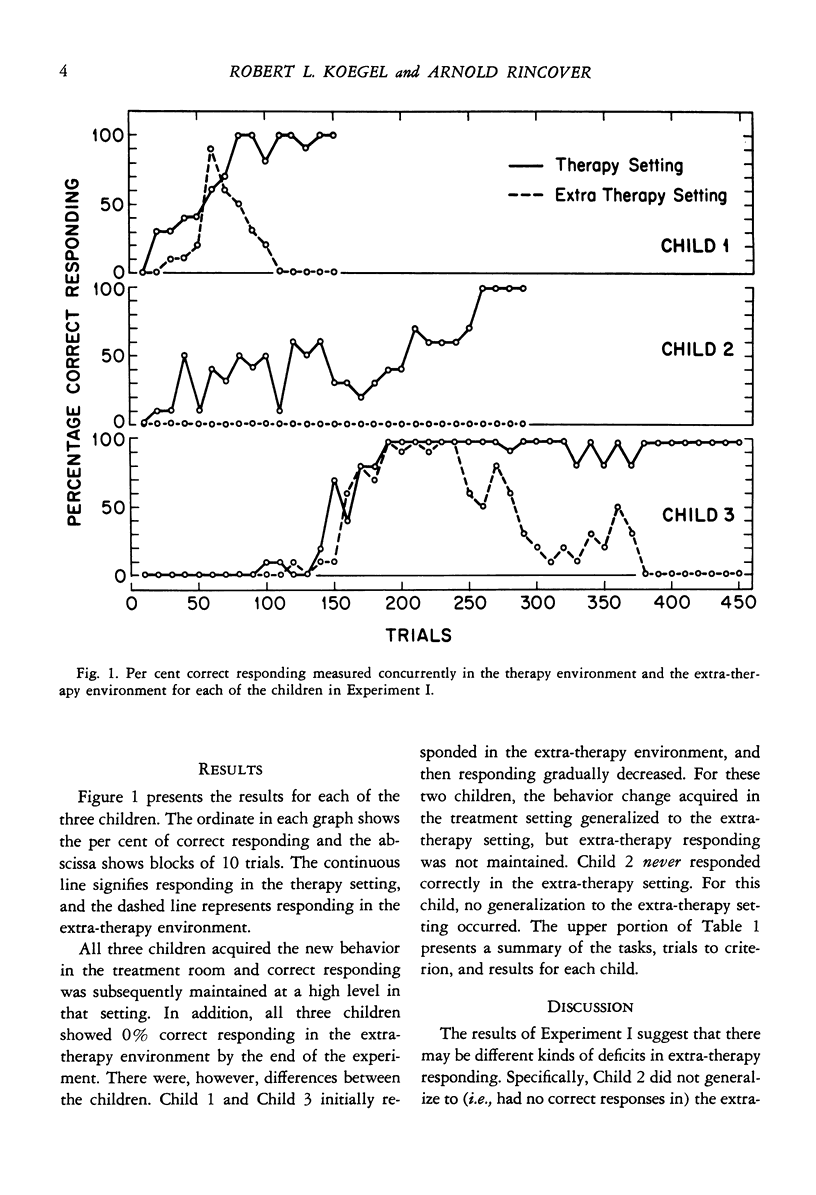
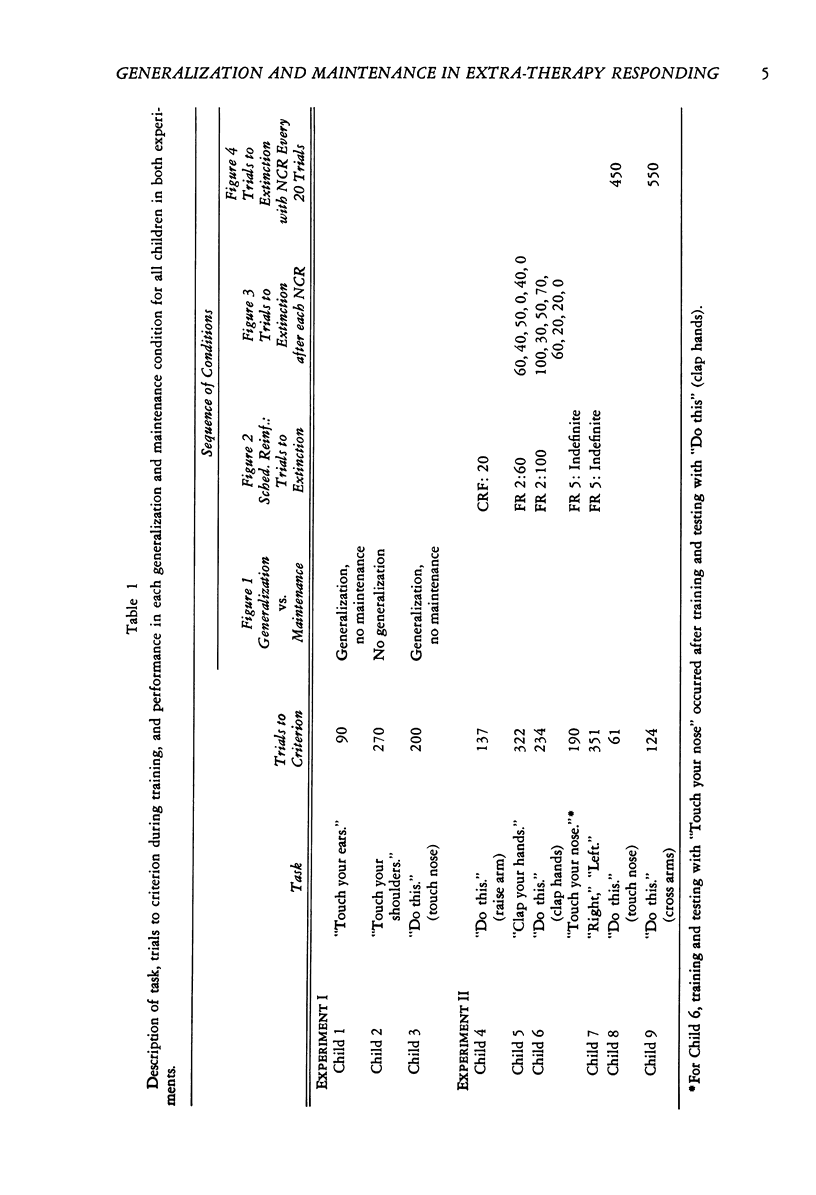
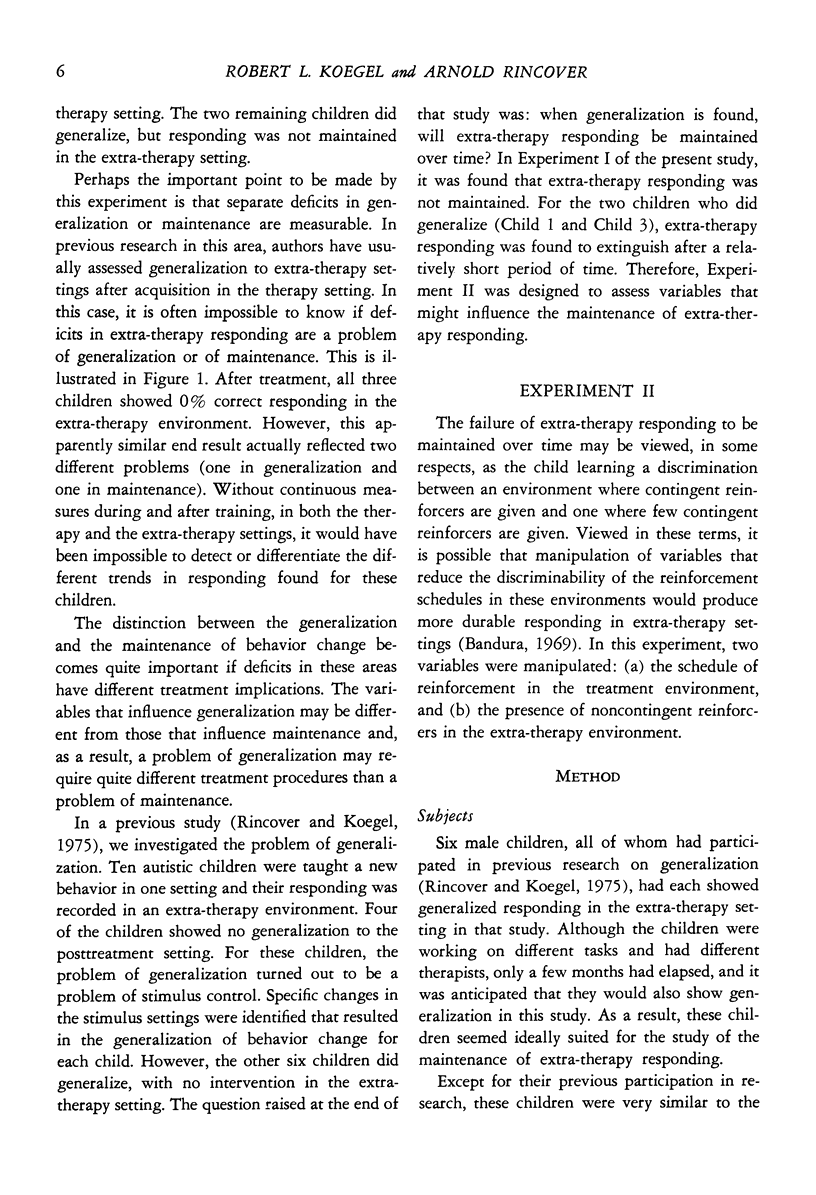
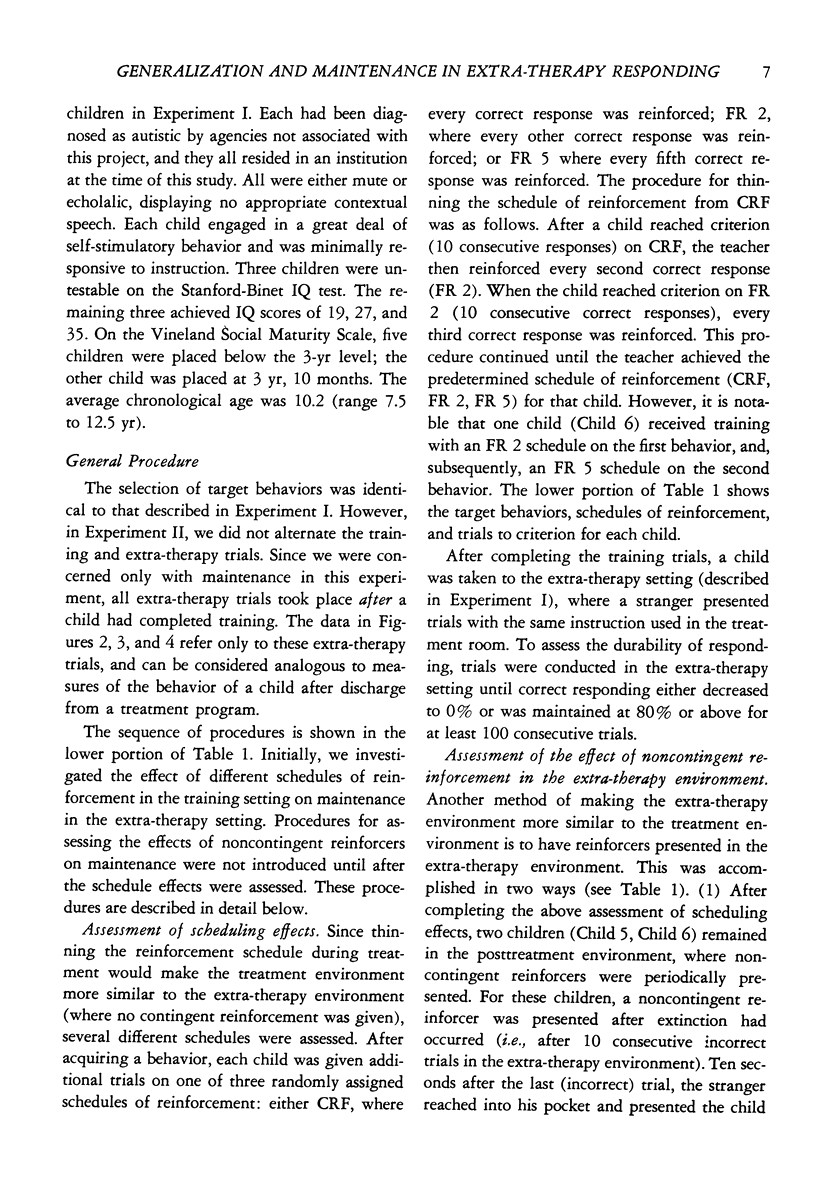
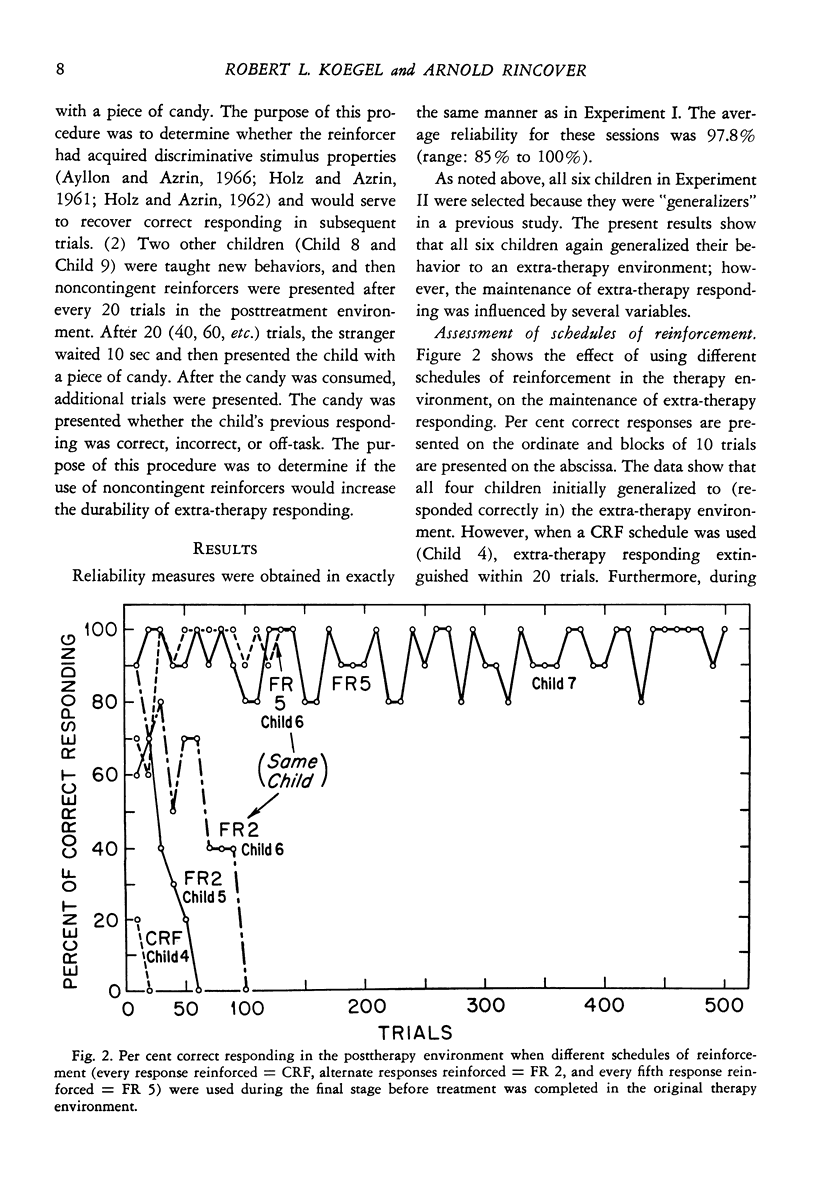
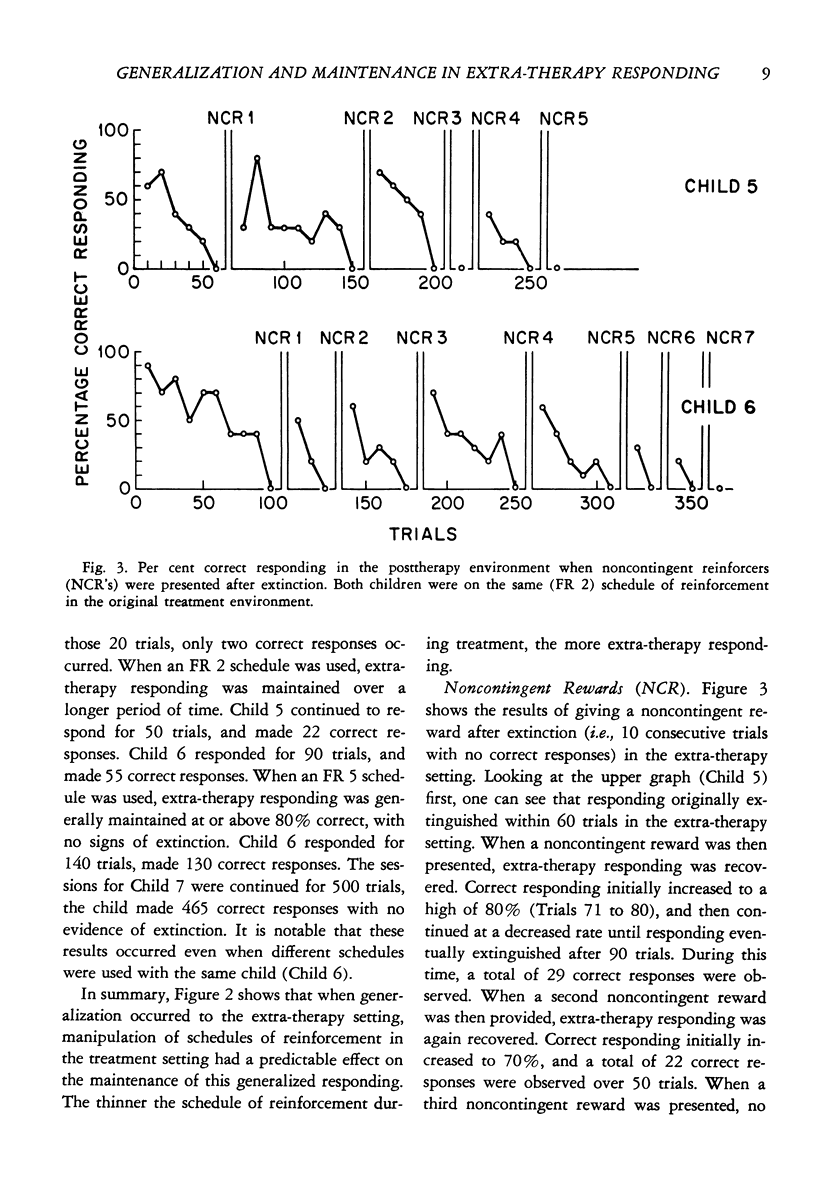
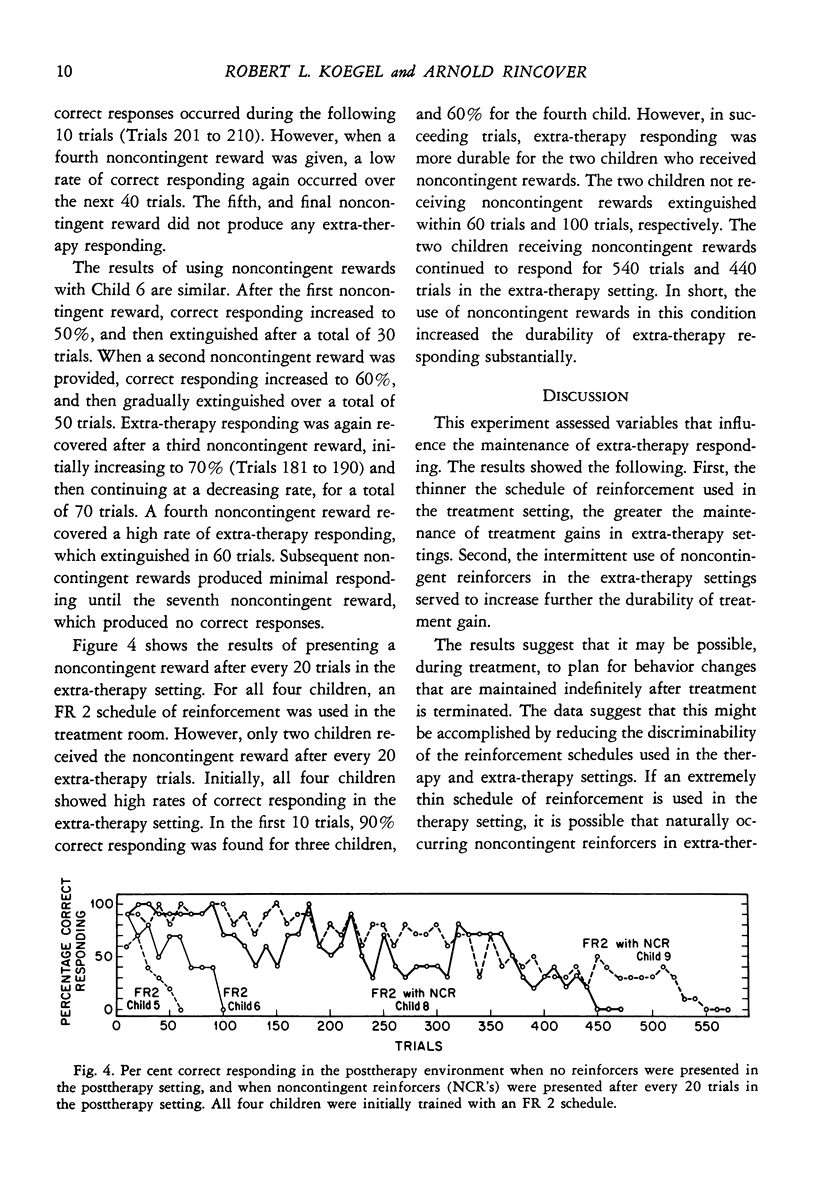
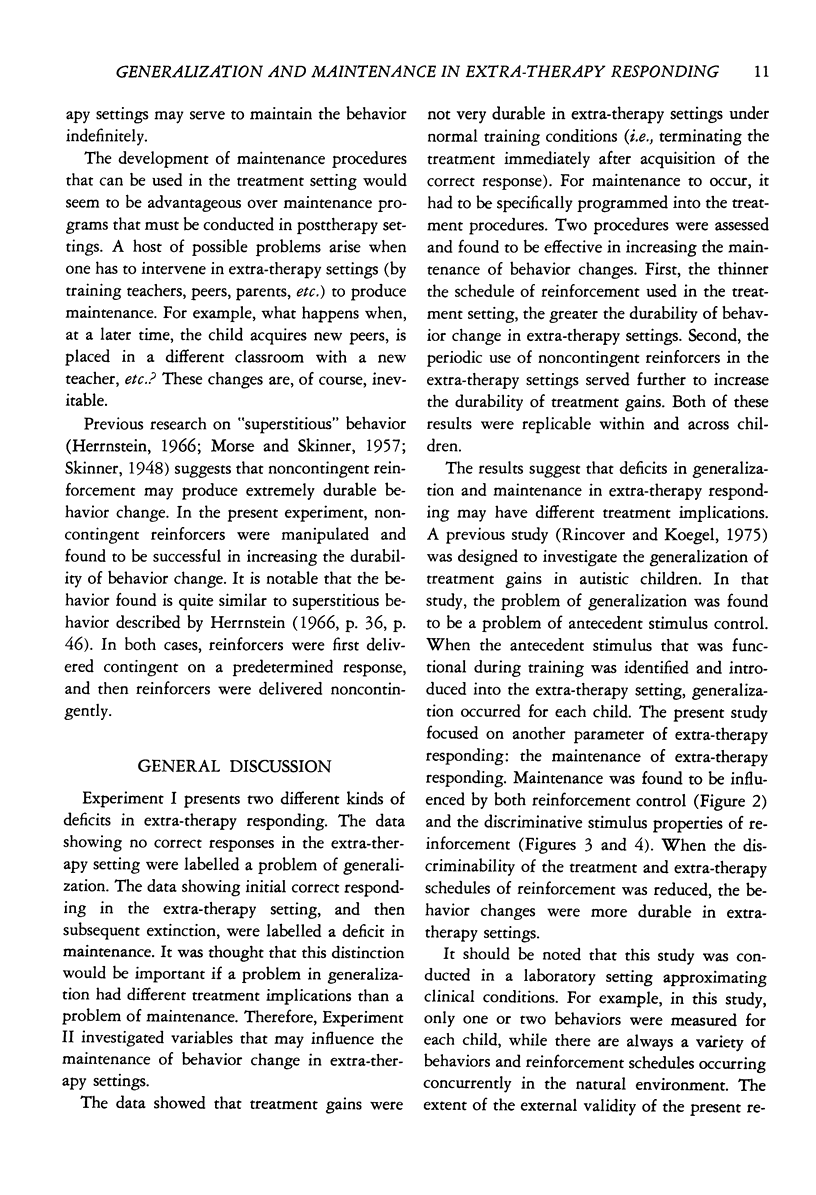
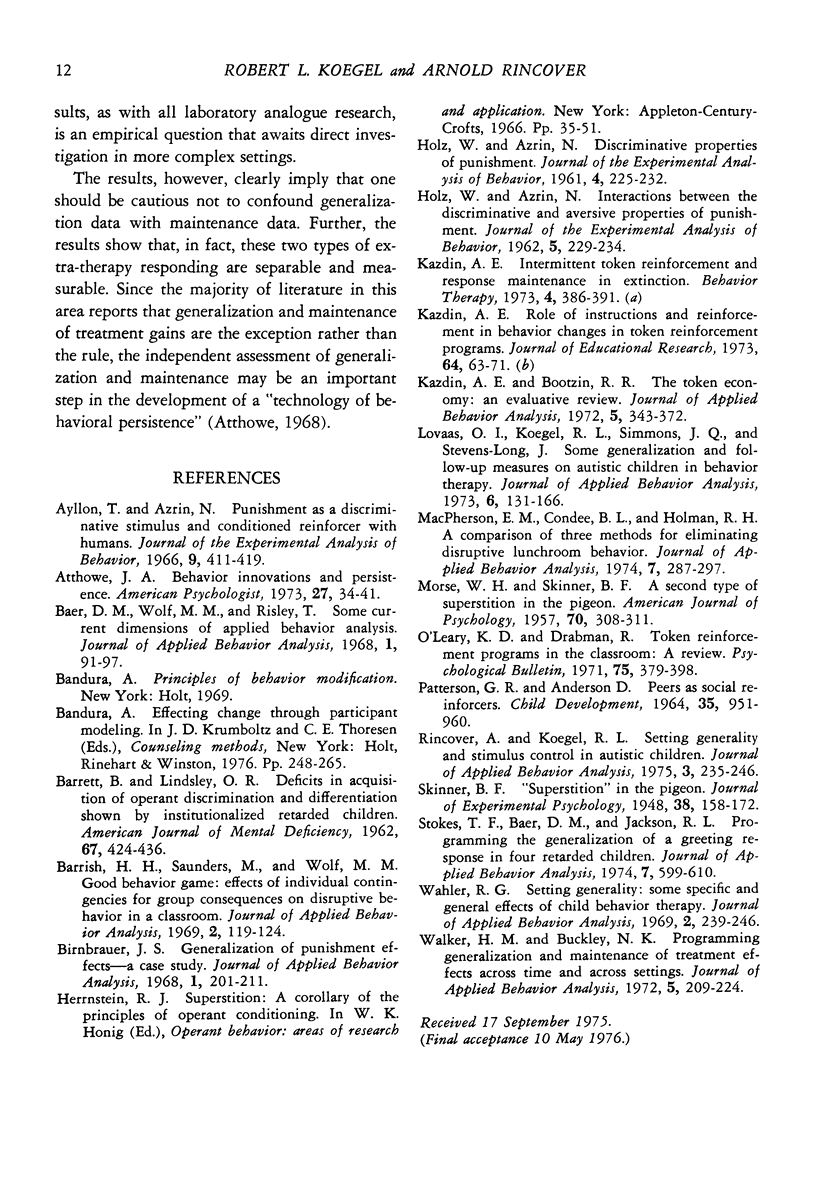
Selected References
These references are in PubMed. This may not be the complete list of references from this article.
- Atthowe J. M., Jr Behavior innovation and persistence. Am Psychol. 1973 Jan;28(1):34–41. doi: 10.1037/h0034168. [DOI] [PubMed] [Google Scholar]
- Ayllon T., Azrin N. H. Punishment as a discriminative stimulus and conditioned reinforcer with humans. J Exp Anal Behav. 1966 Jul;9(4):411–419. doi: 10.1901/jeab.1966.9-411. [DOI] [PMC free article] [PubMed] [Google Scholar]
- BARRETT B. H., LINDSLEY O. R. Deficits in acquisition of operant discrimination and differentiation shown by institutionalized retarded children. Am J Ment Defic. 1962 Nov;67:424–436. [PubMed] [Google Scholar]
- Baer D. M., Wolf M. M., Risley T. R. Some current dimensions of applied behavior analysis. J Appl Behav Anal. 1968 Spring;1(1):91–97. doi: 10.1901/jaba.1968.1-91. [DOI] [PMC free article] [PubMed] [Google Scholar]
- Barrish H. H., Saunders M., Wolf M. M. Good behavior game: effects of individual contingencies for group consequences on disruptive behavior in a classroom. J Appl Behav Anal. 1969 Summer;2(2):119–124. doi: 10.1901/jaba.1969.2-119. [DOI] [PMC free article] [PubMed] [Google Scholar]
- Birnbrauer J. S. Generalization of punishment effects-a case study. J Appl Behav Anal. 1968 Fall;1(3):201–211. doi: 10.1901/jaba.1968.1-201. [DOI] [PMC free article] [PubMed] [Google Scholar]
- HOLZ W. C., AZRIN N. H. Discriminative properties of punishment. J Exp Anal Behav. 1961 Jul;4:225–232. doi: 10.1901/jeab.1961.4-225. [DOI] [PMC free article] [PubMed] [Google Scholar]
- HOLZ W. C., AZRIN N. H. Interactions between the discriminative and aversive properties of punishment. J Exp Anal Behav. 1962 Apr;5:229–234. doi: 10.1901/jeab.1962.5-229. [DOI] [PMC free article] [PubMed] [Google Scholar]
- Kazdin A. E., Bootzin R. R. The token economy: an evaluative review. J Appl Behav Anal. 1972 Fall;5(3):343–372. doi: 10.1901/jaba.1972.5-343. [DOI] [PMC free article] [PubMed] [Google Scholar]
- Kazdin A. E. Role of instructions and reinforcement in behavior changes in token reinforcement programs. J Educ Psychol. 1973 Feb;64(1):63–71. doi: 10.1037/h0034073. [DOI] [PubMed] [Google Scholar]
- Lovaas O. I., Koegel R., Simmons J. Q., Long J. S. Some generalization and follow-up measures on autistic children in behavior therapy. J Appl Behav Anal. 1973 Spring;6(1):131–165. doi: 10.1901/jaba.1973.6-131. [DOI] [PMC free article] [PubMed] [Google Scholar]
- MORSE W. H., SKINNER B. F. A second type of superstition in the pigeon. Am J Psychol. 1957 Jun;70(2):308–311. [PubMed] [Google Scholar]
- MacPherson E. M., Candee B. L., Hohman R. J. A comparison of three methods for eliminating disruptive lunchroom behavior. J Appl Behav Anal. 1974 Summer;7(2):287–297. doi: 10.1901/jaba.1974.7-287. [DOI] [PMC free article] [PubMed] [Google Scholar]
- PATTERSON G. R., ANDERSON D. PEERS AS SOCIAL REINFORCERS. Child Dev. 1964 Sep;35:951–960. doi: 10.1111/j.1467-8624.1964.tb05233.x. [DOI] [PubMed] [Google Scholar]
- Rincover A., Koegel R. L. Setting generality and stimulus control in autistic children. J Appl Behav Anal. 1975 Fall;8(3):235–246. doi: 10.1901/jaba.1975.8-235. [DOI] [PMC free article] [PubMed] [Google Scholar]
- Stokes T. F., Baer D. M., Jackson R. L. Programming the generalization of a greeting response in four retarded children. J Appl Behav Anal. 1974 Winter;7(4):599–610. doi: 10.1901/jaba.1974.7-599. [DOI] [PMC free article] [PubMed] [Google Scholar]
- Wahler R. G. Setting generality: some specific and general effects of child behavior therapy. J Appl Behav Anal. 1969 Winter;2(4):239–246. doi: 10.1901/jaba.1969.2-239. [DOI] [PMC free article] [PubMed] [Google Scholar]
- Walker H. M., Buckley N. K. Programming generalization and maintenance of treatment effects across time and across settings. J Appl Behav Anal. 1972 Fall;5(3):209–224. doi: 10.1901/jaba.1972.5-209. [DOI] [PMC free article] [PubMed] [Google Scholar]


